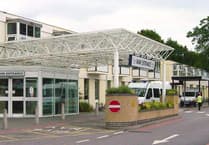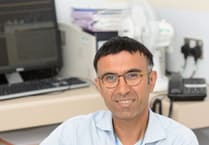PEOPLE have had the chance to forage for wild food, with conservationist and town councillor Adam Carew demonstrating how to find and cook food from the countryside.
Mr Carew, who is also a district and county councillor, led a two-hour walk around the Bordon Inclosure near Quebec Park last Saturday.
He identified edible plants and fungi, as well as discussing their medicinal uses and folklore, before returning to Quebec Park’s Cafe 1759 to cook the finds.
“Wild food from trees included hazelnuts; sweet chestnuts; elder for flowers and berries; beech leaves and mast; oak which provides rather tannic acorn coffee, and birch and sycamore which can be tapped for sap in spring,” Mr Carew said.
“Wild plants included blackberry, wild raspberry and red currant which grow in wet woods; and plants used for herbal teas and tisanes including two species of heather, stinging nettle, yarrow and pineapple weed (German chamomile).”
There was also a rich selection of edible fungi, with plenty of wives’ tales about their supposed benefits, including the aphrodisiac witch’s egg, also known as stinkhorn.
“We also discovered some amazing orange-peel fungus in some acid grassland and sparassis crispa, or cauliflower fungus, which grows at the base of pine trees,” Mr Carew added.
Susi Drummond, community development officer at Radian, said: “We had a great turnout to the food-academy foraging event held at Radian’s Cafe 1759. We are excited to support local events promoting community cohesion and show the versatility of Cafe 1759.”
Mr Carew thanked Radian, the housing group with manages Quebec Park, and Cafe 1759 for allowing use of “their wonderful new facilities” and especially to Ms Drummond for acting as an “excellent sous chef”.




